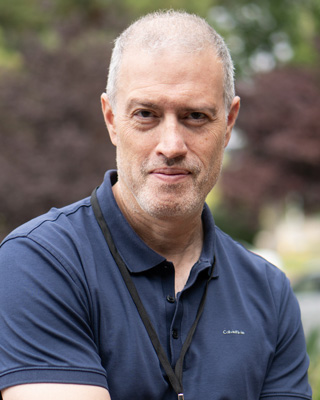Home > On-Demand Archives > Talks >
Channelizers in Digital Receivers
Ric Losada - Watch Now - EOC 2025 - Duration: 01:37:26

As A/D converters move closer to the antenna of a digital receiver, the need to handle broadband signals efficiently in the digital domain is increasing. Efficient Polyphase/FFT Filter Banks (aka Channelizers) are a natural extension to traditional Polyphase Decimators that can handle broadband multi-channel signals efficiently.
This talk will cover:
- How channelizers are derived and implemented
- Considerations in designing a prototype filter
- Oversampled channelizers
- Showcase simulations demonstrating using channelizers with broadband signals
Hello Mr Losada,
I enjoyed your amazing presentation, thank you for sharing.
I had a question regarding the over-sampled channelizers. While doing the presentation you do not go into details about the application of these types of channelizers. At demonstration you mention it towards the end but since digital communications is not my field, I don’t think I correctly understood what is going on. Frankly, I could not properly wrap my head around what happens in the frequency domain and cannot be sure about any other potential applications. Can you give some other examples to where oversampled channelizers are especially useful/needed (besides digital comm)?
Regarding what is going on in the frequency domain; as I understand it (likely to be wrong) since we get more channels than the decimation ratio, each channel should have overlapping sections (to one another) with the overlap ratio being equal to (C/M-1).
For example: if Fs’ = 100MHz , C = 5 , M = 4
@ Channelizer output Fs = Fs’/M = 25 MHz
and since we have C=5 channels, the total bandwidth of channelizer output should be Fs*C = 125 MHz. That means each channel have an additional 5 MHz and half of this additional band is shared with each one of the adjacent channels. Is this correct?
Assuming the previous part is not wrong, let’s say we had an application (spectrum analyser for instance) where:
- Overlap is unacceptable
- Total usable bandwidth should be same as
Fs’ - The polyphase/prototype filter should not be very costly
Since there is no overlap and passband edge needs to be very close to Nyquist frequency (due to total usable BW requirement) then the transition band should be extremely narrow which would result in a very long filter (meaning last requirement cannot be met). In this case if we can live with the cost of having an extra channel (referring to C=5 , M=4 example above) than all 3 requirements can be met.
- We can design a prototype filter that has a passband edge around 10 MHz and stopband edge around 12.5 MHz (or less) which would result in a reasonable filter length.
- Since the stopband is exactly at or a little before the Nyquist frequency, there wouldn’t be any overlap
- Since the passband edge is @10MHz we would obtain a total usable bandwidth of
10MHz * 2 * C = 100 MHzwhich is equal toFs’.
So just by having to process 5 channels instead of 4 and using an oversampled channelizer we can satisfy all 3 requirements.
If you can comment on my understanding of this topic or just refer to some external sources, I would be very happy. Thanks again for explaining the topic in so much detail and supporting it with live demonstrations.


















Hello and thank you for your comments!
The oversampled channelizer concept is different to what you mention.
The filter bandwidth is designed to match the number of channels. So they do not overlap (much) in frequency. In that sense, it is not different from the regulat channelizer (critically sampled).
The difference is that the downsampling factor is less than the number of channels which means each output channel is oversampled (over-satifies Nyquist sampling criteria of twice the bandwidth). This can be useful in some cases like synchronization because you need to perform fractional delays on each output channel to synchronize, and being oversampled helps!
The real power that I tried to illustrate is having an oversampled channel synthesizer paired with a channelizer. In this case, the spectral replicas are further from each other and you can relax the transition width requirements of the filter (thus you can reduce the filter order) and have no interference between channels. In this case, your channelizer output is also oversampled (because you fed it an oversampled signal produced by the oversampled channel synthesizer).
I don't know if my answer is clear. I hope so.